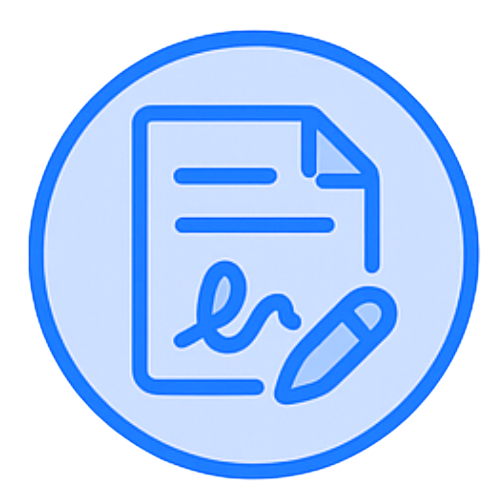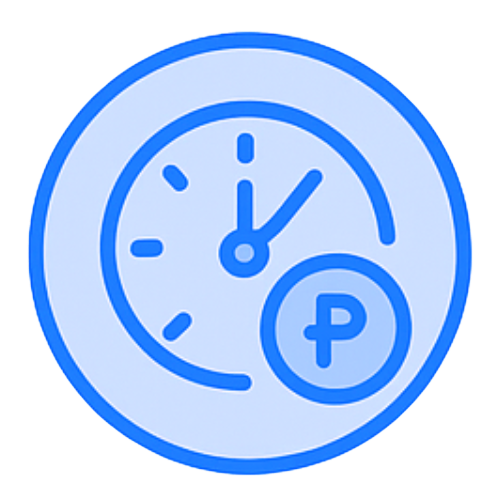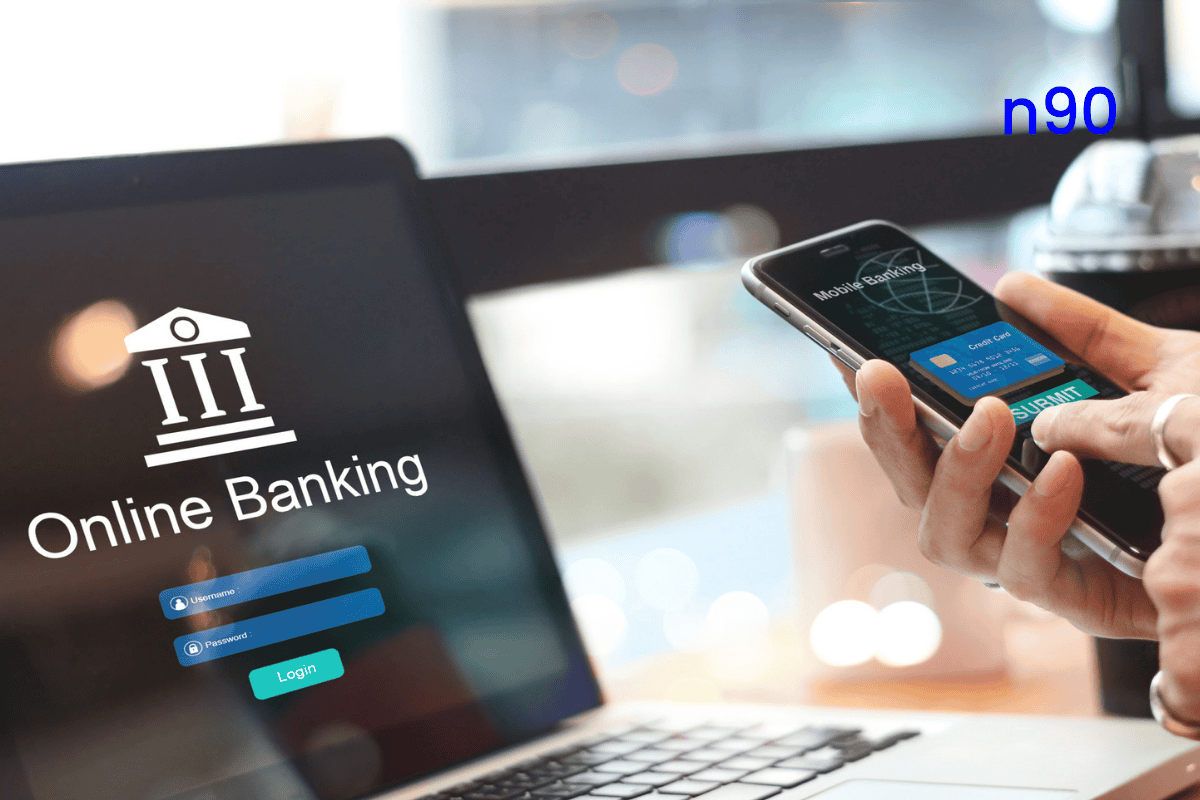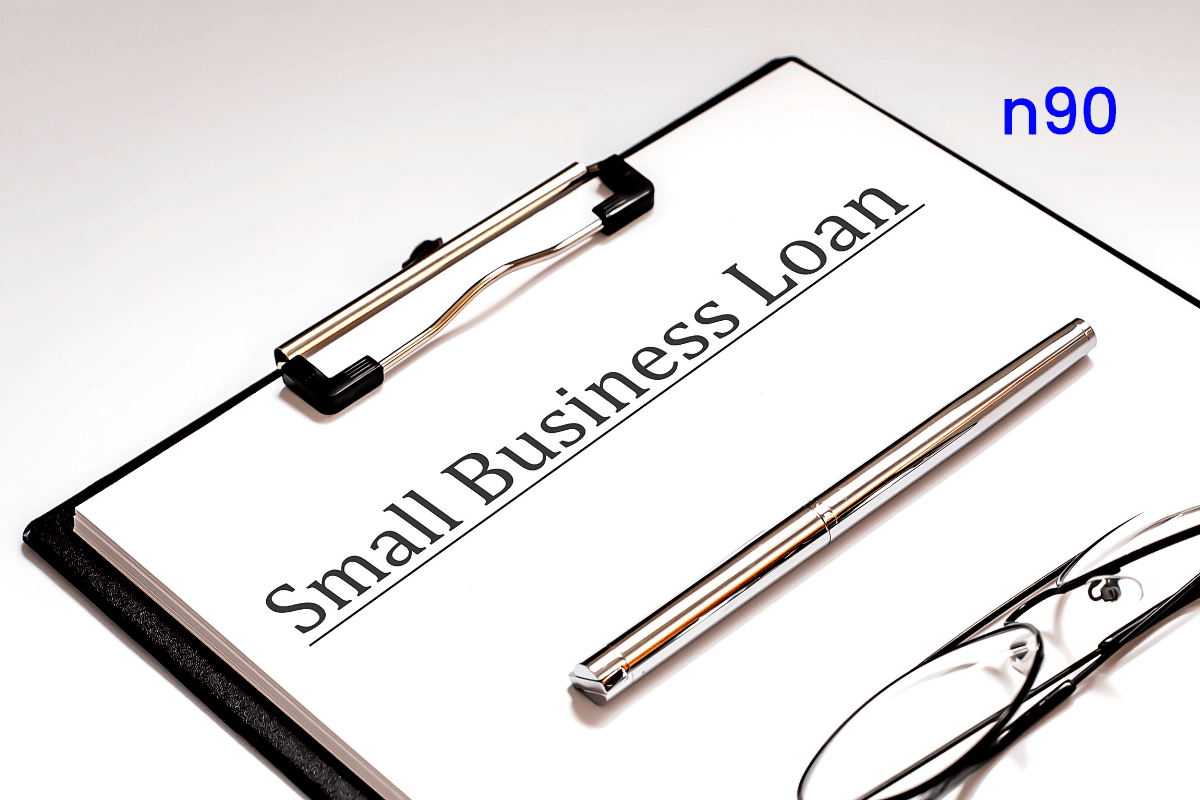In 2022, the average cost of a cyber breach was a staggering $4.35 million, and cybercrime is predicted to cost the global economy around $7 trillion, with this number set to rise to $10.5 trillion by 2025. These figures highlight the growing threat businesses face from cybercriminals, making it clear that no company, big or small, is immune to the risks of online security breaches.
In the Philippines, where many small and medium enterprises (SMEs) are embracing digital banking for greater efficiency, securing online banking access is more important than ever. The growing reliance on digital tools and online financial transactions makes SMEs in the region attractive targets for cybercriminals. A single breach can lead to severe financial losses, disruption of operations, and long-term damage to a company’s reputation.
This blog will explore how you can secure your online banking login, mitigate risks, and safeguard your business from costly cyber threats, helping protect the growing digital landscape of Philippine businesses.
What are the Risks of Online Banking?
As a business owner, you probably use online banking to check balances, pay suppliers, or manage payroll. It’s fast and convenient, but it also comes with real risks. One wrong click or careless login can expose your business to fraud, stolen funds, or a full-blown data breach.
Cybercriminals don’t just target large corporations. Small and mid-sized businesses often have fewer security resources, making them easier targets. If someone gains access to your account, you could face locked systems, drained bank balances, or even identity theft—all of which can disrupt operations and damage your reputation.
You don’t need to be a tech expert to stay safe. The threats below are common but preventable. Knowing how they work is the first step to protecting your business. Take a few minutes to review them, and you’ll be in a much stronger position to secure your finances.
1. Phishing Scams
Phishing is one of the most common tactics cybercriminals use to steal your login credentials. These scams often come in the form of emails, messages, or websites that look like they come from your bank. You might be asked to click a link or provide your username and password. It might even look convincing. But once you type in your details, they go straight to a criminal.
Watch for minor signs like misspelled email addresses, generic greetings, odd links, or urgent language asking for sensitive information. Always check that you’re logging in through your bank’s official website or verified mobile app. Your bank will never ask for your password or PIN by email, phone, or text.
2. Malware and Ransomware
Malware infects your device and can silently record what you type, steal your login info, or give someone remote access to your system. Ransomware takes things further. It locks you out of your files and demands payment in exchange for access. That can freeze your operations and force you to negotiate with criminals.
To reduce the risk, use reliable antivirus software, install updates regularly, and never download files from untrusted sources.
3. Fake or Compromised Mobile Apps
Many SME owners rely on mobile apps for quick access to banking. However, downloading apps from unverified sources can put your data at risk. Some fake apps mimic official ones and trick you into entering your login credentials, which then go to a criminal.
Always download your bank’s app through links on its official website or directly from Google Play or the Apple App Store.
4. Identity Theft
If someone gets your login details, they can impersonate you, access your accounts, and move funds. Some criminals gather your personal information over time, using multiple sources like data breaches, phishing, or social engineering. Once they have enough, they can cause serious financial harm to your business.
Protect your identity by using strong, unique passwords for banking and turning on two-factor authentication wherever possible.
5. Data Breaches
You might take all the right steps, but some risks come from outside your business. Large-scale data breaches at banks or financial service providers can put your information at risk. When these happen, criminals use leaked data to commit fraud or sell the information to others.
To lower your risk, change your passwords regularly and review your account activity often. Acting quickly can reduce the damage if your information gets exposed.
Recognizing the risks of online banking is the first step toward protecting your business, but awareness alone isn’t enough. Cyber threats like phishing, malware, and identity theft can have real financial consequences if you’re not prepared. However, the right practices and tools can prevent most of these risks.
Best Practices to Keep Your Online Banking Secure
Many SMEs operate under pressure, managing tight cash flow and lean teams, which can make it easy to overlook cybersecurity. Fortunately, protecting your business doesn’t require advanced expertise. With the right habits in place, you can create a strong first line of defense against cyber threats.
Here are practical steps to help secure your business banking and maintain control over your financial systems.
1. Set Strong, Unique Passwords
Creating strong passwords is your first line of defense. Weak passwords are one of the easiest ways hackers can access your online banking accounts. Avoid using easily guessed information like your business name or address when creating passwords. Instead, use a combination of:
- Uppercase and lowercase letters
- Numbers
- Special characters
Consider using a password phrase, a series of unrelated words combined with numbers and symbols, for extra complexity. Regularly changing passwords, especially after security updates or system breaches, can help secure your accounts.
You significantly improve online banking security by making passwords harder to crack.
2. Use a Password Manager
Managing multiple strong passwords can be difficult, especially for SMEs that handle various online tools and accounts. A trusted password manager can help securely store your login credentials and generate unique passwords for every account.
These tools eliminate the need to remember dozens of complex passwords and ensure your passwords are strong, unique, and challenging to guess. Look for a password manager that encrypts data and offers secure device syncing. Popular options like NordPass and 1Password can help keep your business’s sensitive information safe while ensuring you never forget a password again.
3. Enable Two-Factor Authentication (2FA)
Two-factor authentication (2FA) is an additional layer of security that requires you to verify your identity in multiple ways. Once you enter your password, 2FA sends a one-time code to your phone or email, ensuring that even if someone has your password, they won’t be able to access your account without this second step.
Enable 2FA wherever possible, especially for banking apps and platforms. Many banks and payment systems now require it as a standard practice, but if your bank doesn't offer 2FA, contact them to see if they can enable it.
Using 2FA significantly reduces the likelihood of a breach, adding extra protection to your sensitive financial data.
4. Set Up Real-Time Account Alerts
In the fast-paced business world, it’s easy to overlook small transactions that could indicate fraud. Setting up real-time account alerts will notify you of any activity in your bank account, such as:
- Login attempts
- Transactions above a certain amount
- Password changes
- Failed login attempts
You can act quickly if something seems unusual by staying informed of every transaction or change. For example, if an unknown payment is processed, you can alert your bank and stop the transaction before it causes significant harm. Alerts also help you track cash flow in real-time, which is critical for managing your business's financial health.
5. Avoid Public Wi-Fi for Banking Transactions
Public Wi-Fi networks are a hacker's playground. When you connect to networks in places like cafés, airports, or hotels, your data becomes vulnerable to attack. Cybercriminals can use these networks to intercept your login credentials, banking details, and other private information.
Avoid logging into your online banking accounts or making sensitive transactions when connected to public Wi-Fi if you must access your accounts while out, consider using your phone’s mobile hotspot instead. This way, your internet connection remains private, and your data stays secure.
6. Install and Keep Antivirus Software Updated
Malware, spyware, and viruses are serious threats that compromise your device's security, including your online banking apps. Antivirus software helps detect, prevent, and remove malicious software that may go unnoticed.
Make sure your antivirus software is always up to date. New threats emerge daily, and regular software updates keep your defenses strong. Many modern antivirus programs also include firewall protection and tools that detect suspicious websites, which add an extra layer of defense to your online banking activities.
7. Stick to Official Banking Apps and Websites
Cybercriminals often create fake websites or apps to impersonate legitimate banks, hoping you’ll unknowingly enter your login credentials. To avoid falling into this trap, always access your bank’s website through a verified link from its official site. Be cautious of links sent via email, text, or social media.
Before logging into your bank account, always ensure the website is secure. You should see “https://” at the beginning of the URL and a padlock icon “🔒” next to it, which indicates that the website is encrypted. For mobile banking, only download apps from trusted sources like the Google Play Store or Apple App Store.
8. Watch for Suspicious Emails and Messages
Phishing and SMS messages are among the most common tactics to steal banking credentials. Fraudsters often impersonate trusted organizations like your bank and ask for sensitive information under pretenses.
Be wary of unsolicited emails or messages that:
- Ask for personal or banking information
- Contain links or attachments
- Use urgent or alarming language
Banks will never ask for your password, PIN, or other sensitive details via email or text. If you receive suspicious communication, contact your bank directly using the contact information on their official website rather than clicking any links or responding.
9. Limit Access to Banking Credentials
In a small or medium-sized business, more than one person might need access to the company’s bank account. However, granting full access to multiple individuals increases the risk of fraud. Always limit access to banking credentials and assign specific roles to employees who handle finances. Use restricted access tools where possible to keep sensitive data private.
If an employee no longer works with your company, immediately disable their access to your online banking accounts.
10. Regularly Review Account Activity
It is essential to check your bank account regularly for unauthorized transactions. Set a schedule to review account statements, monitor incoming and outgoing payments, and check for discrepancies.
Most banks offer detailed transaction histories that allow you to spot unusual activity quickly. Early detection can help prevent larger issues like unauthorized withdrawals or fraud. If you notice anything suspicious, contact your bank immediately to investigate.
Following these best practices strengthens your online banking security and helps protect your business from cyber threats. While strong digital habits are essential, having a reliable financial partner is just as important. Apply now with n90 and get fast, flexible, and secure funding for your business.
Still, no system is foolproof. If a breach occurs, acting fast and knowing the right steps can limit the damage and help your business recover quickly.
Read Also: Top Legit Loan Apps for Long-Term Borrowing with Low Interest
What to Do in Case of a Financial Breach?
Even with strong security practices, there’s always a chance something could go wrong. Act immediately if you suspect fraud or unauthorized activity in your online banking account. Quick action can prevent further losses and limit the impact on your business.
1. Contact Your Bank Right Away
Report any suspicious transactions, failed login attempts, or unfamiliar account changes as soon as you notice them. Most banks have dedicated hotlines or in-app support for reporting fraud. The faster you alert them, the sooner they can freeze transactions, secure your account, and start an investigation.
When you call, have your account number and details ready to speed up the process.
2. Lock Online Transactions or Your ATM Card
If your bank offers the option, use their mobile app or online dashboard to temporarily lock your ATM card or block online transactions. This step adds an extra barrier while your bank looks into the issue.
It’s a good idea to familiarize yourself with how to use this feature before you need it so you’re ready if a problem arises.
3. Change All Affected Passwords Immediately
Update your login credentials for your bank account and any other accounts that use the same password. Use a strong, unique password that you haven’t used before. If your email or phone number was involved in the breach, secure those accounts. This helps cut off other possible access points for the attacker.
4. Enable Two-Factor Authentication (If You Haven’t Already)
If 2FA wasn’t set up before the breach, activate it now. This will add an extra step for any login attempt and help stop further unauthorized access.
5. Monitor All Account Activity Closely
Keep checking your business and personal bank accounts for any new suspicious transactions. Set up alerts for real-time updates. Review recent account history and statements carefully—even small or unrecognized charges can be a red flag.
6. Report the Incident to the Relevant Authorities
In serious cases, especially those involving identity theft or large financial losses, consider filing a report with:
- The Philippine National Police (PNP) Anti-Cybercrime Group
- The National Bureau of Investigation (NBI) Cybercrime Division
- Your local barangay or city hall, if needed for formal documentation
These steps can also help when disputing fraudulent charges or filing insurance claims.
7. Inform Your Team (If Applicable)
If your business has multiple people accessing the same banking platform, notify them about the breach. This helps prevent further login attempts, resets, or confusion while resolving the issue.
Taking these steps quickly can reduce the damage and give you a more straightforward path to recovery. Security issues can feel overwhelming, but responding with a plan helps you stay in control and protect your business.
By staying prepared and responding decisively, you will protect your finances and also strengthen your business’s long-term resilience against future threats.
Prevention is key, but recovery matters, too. Whether you're upgrading your security infrastructure or recovering from an incident, n90 can provide the fast financial support you need to stay operational and secure. Learn more!
Final Note!
Banking online offers convenience and efficiency, but it also demands vigilance. By following strong security practices like using unique passwords, enabling two-factor authentication, and staying alert to suspicious activity, you can protect your business from costly breaches and disruptions. Building these habits today helps ensure your finances stay secure tomorrow.
At n90, we support SMEs by simplifying digital processes and encouraging secure, smart business practices. We help you focus on what matters most– running and growing your business while keeping your online banking safe.
Ready to secure your business's financial future? Apply now for an SME loan with n90 and ensure your business has the resources to protect and grow its online operations.
FAQs
1. What are the signs that my online banking account may have been compromised?
A: Signs of a compromised account may include unusual transactions, changes to account details you didn’t make, unexpected login activity, or receiving login alerts from unfamiliar locations. If you notice anything suspicious, it's important to act immediately and report it to your bank.
2. Can I access my online banking account safely from a mobile device?
A: Yes, but you need to ensure your device is secure. Only download official banking apps from trusted app stores, and ensure your mobile device has strong passwords, encryption, and up-to-date security software. Avoid using public Wi-Fi for financial transactions and enable biometric authentication (fingerprint/face ID) for added security.
3. How can I prevent unauthorized access if I share my login credentials with trusted employees?
A: Implement role-based access control, allowing employees to only access specific areas they need. Set up strong, unique passwords for each user and use two-factor authentication (2FA) to add an additional layer of security. Ensure employees are trained to recognize phishing and other cybersecurity risks.
4. What should I do if I forget my online banking password?
A: If you forget your password, most banks have a secure password recovery process. You’ll typically need to answer security questions, verify your identity, or receive a password reset link via email or text. Make sure to create a new, strong password once you regain access.
5. How often should I change my online banking password?
A: It’s recommended that you change your online banking password every 3-6 months or immediately if you suspect a security breach. Regular password updates reduce the risk of unauthorized access.













